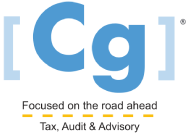The Setting Every Community Up for Retirement Enhancement (SECURE) 2.0 Act was recently signed into law. Designed to encourage employers to offer retirement benefits and encourage employees to participate in these retirement plans, the new legislation includes some policy changes we want to make you aware of. Let’s take a look at two sections and what they might mean for you.
Section 603 – Catch-up contributions on a Roth basis if threshold met
What it means:
Effective for taxable years beginning after December 31, 2023, an employer-sponsored retirement plan (other than a SIMPLE IRA or SEP) participant’s catch-up contributions must be made on a Roth basis for plan participants with wages exceeding $145,000 in the preceding calendar year. Plan participants below the $145,000 threshold are permitted to elect to have catch-up contributions made on a Roth basis or on a traditional (pre-tax) basis. This designated threshold will likely be adjusted annually for inflation. Employer retirement plans that do not allow designated Roth contributions may not permit catch-up contributions.
What you should know:
- These funds will not reduce current taxable income as they are being contributed with after-tax dollars. However, these funds can be withdrawn tax-free in the future.
- These changes result in high wage earners paying more tax today even if they are in a higher tax bracket today than they are at retirement.
- Plans that don’t already have a Roth provision in their plan document will need to be amended to allow for this (or else higher-income employees will not be able to make catch-up contributions).
- Plans will need to begin tracking the income limit by employee to determine if catch-up contributions must be made as Roth contributions which can create an administrative burden.
- Some taxpayers will see this as a disadvantage, however, depending on individual goals and expected income tax brackets in retirement, this may not be a negative for everyone.
- It is currently unclear as to whether this would apply to self-employed individuals who do not earn wages.
- Due to the legislative errors and oversights, administrative complexity, and operational challenges where more guidance is needed, many organizations are requesting transition relief of this provision. Stay tuned.
Section 109 – Increased catch-up contribution limit for ages 60 to 63
What it means:
Effective for taxable years beginning after December 31, 2024, this provision significantly increases the catch-up contribution limit for 401(k), 403(b), and governmental 457(b) plan participants ages 60 through 63 to the greater of $10,000 or 150% of the standard catch-up amount for 2024.
Regarding SIMPLE plans, individuals ages 60 through 63 will be able to make catch-up contributions up to the greater of $5,000 or 150% of the regular catch-up amount in 2025.
Both thresholds are expected to be indexed for inflation.
What you should know:
- Individuals are able to contribute more towards their retirement during these potentially high earning years between the ages of 60 through 63.
- Based on the changes to catch-up contributions in Section 603 of the SECURE 2.0 Act, for some individuals these increased catch-up contributions will need to be made as a ROTH contribution.
We’ll continue to keep you apprised of additional provisions to the SECURE 2.0 Act. In the meantime, please reach out to Cg with any questions or for more information.

